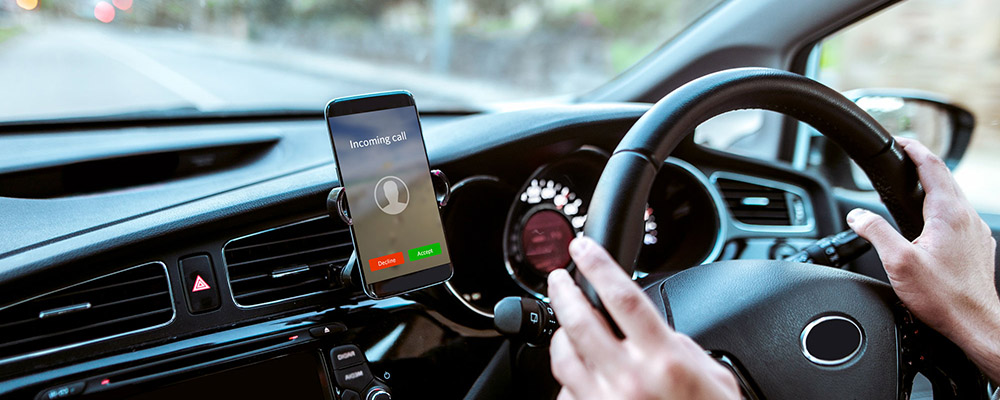|
Waka Kotahi NZ Transport Agency has announced a new partnership to remind drivers about the importance of remaining safe behind the wheel and to raise awareness around the issue of mobile phone driver distraction. At the helm of the partnership is an industry-wide initiative with Spark, 2degrees and Vodafone, and input from Auckland Transport and NZ Police. All partners have a core purpose: to make New Zealand roads a safer place. It’s safest not to use a phone at all when driving but the reality is that driver phone use is commonplace. As many of these uses are both dangerous and illegal, the working group has developed a fact sheet to highlight the legal and illegal use of phones in cars and better equip drivers with knowledge around driver distraction. |
While it’s safest not to use a mobile phone while driving, in limited circumstances, it’s legally acceptable.
Legal phone use, even by very experienced drivers, can still be distracting and increase the risk of a crash. It’s important to be aware of what is legal and illegal use of a phone. If you choose to use your phone legally, we encourage you to consider this advice.
Note: Some wearable devices, such as Bluetooth connected watches, perform similar functions to a phone. If you wear one of these devices, you’ll find the information in this fact sheet relevant too.

| It's illegal for a driver to: |
 hold and use a mobile phone at any time while driving or waiting in a queue of traffic, at an intersection, or at traffic lights hold and use a mobile phone at any time while driving or waiting in a queue of traffic, at an intersection, or at traffic lights |
 create, send or read any type of message while driving create, send or read any type of message while driving |
 email, use social media, video call, browse the internet, play games and take photos/video while driving email, use social media, video call, browse the internet, play games and take photos/video while driving |
 perform any other activity not specifically listed while holding a mobile phone and driving, including use of the phone for navigation or to play music. perform any other activity not specifically listed while holding a mobile phone and driving, including use of the phone for navigation or to play music. |
These functions are only permitted when legally parked, meaning the vehicle is stopped safely and is not in the flow of traffic.
The penalty for using a hand-held mobile phone while driving is $150 and 20 demerit points.
 What are your options?
What are your options?Best practice when driving:
If you decide to use your phone legally:
 Hands-free
Hands-freeHands-free doesn’t mean risk-free.
If you’re talking hands-free, you’re still more at risk of having a crash than if you’re not talking on the phone at all. This is because a driver using a phone can be distracted by concentrating on the conversation rather than on the road.
If you’re talking hands-free, it’s recommended that you:
| Use / function | |
|
Make or receive an audio phone call  |
ONLY if the phone is either:
|
|
Use music or audio functions
|
ONLY if the phone is either:
|
|
Use for navigation (e.g. Google Maps)
|
ONLY if the phone is either:
|
Note: a driver can legally make a 111 or *555 call if it isn’t safe or practical to stop the car and make the call.
If you need to contact someone who’s driving, help keep them safe by considering the following:
